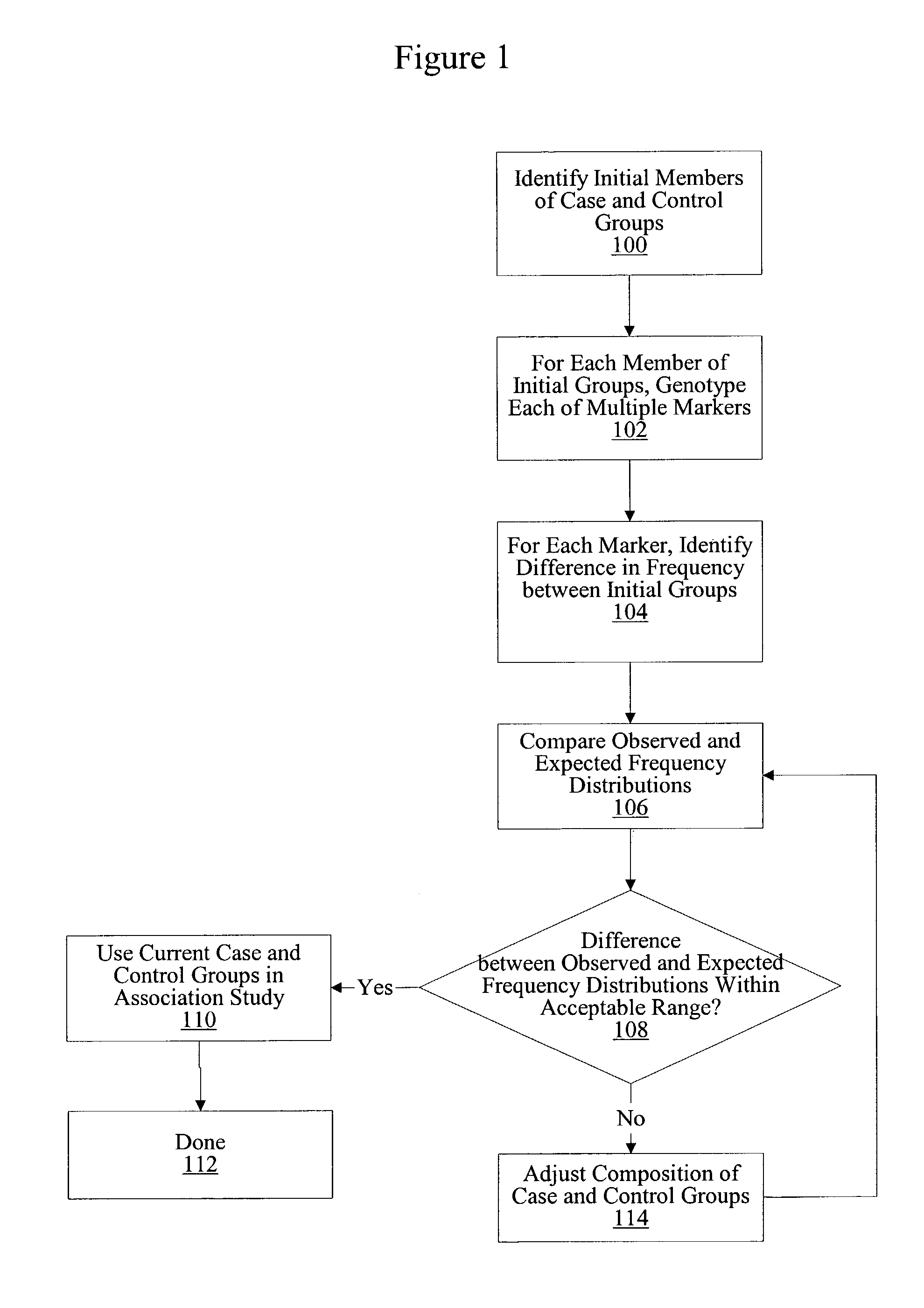Method for identifying matched groups
a group identification and group identification technology, applied in the field of case-control association studies, can solve the problems of difficult and expensive follow-up on spurious associations, association studies are often criticized for inability to distinguish causal associations from spurious ones, and use homogeneous groups in association studies
- Summary
- Abstract
- Description
- Claims
- Application Information
AI Technical Summary
Benefits of technology
Problems solved by technology
Method used
Image
Examples
examples
[0089]To test and compare the population structures of a case and a control population prior to performing an association study, 312 SNPs from a subset of individuals from each population were genotyped. Multiplex PCR was used to amplify genomic regions containing the 312 SNP loci, and a different primer pair was required for each SNP locus. The 312 primer pairs required to amplify the genomic regions containing the 312 SNP loci were pooled such that 13 primer pairs were included in each multiplex PCR. Thus, a total of 24 multiplex PCRs were required to amplify the 312 SNP loci for each individual to be tested.
[0090]The pooled primer pairs were diluted to a final concentration of 2.5 μM with TE resulting in 10.34 ml of a pooled primer stock solution. Then, for one pooled primer stock solution, 114 μl was aliquoted into each of the wells in a predetermined region on a multi-well plate (“Primer Stock Plate”). This was repeated for each of the pooled primer stock solutions such that al...
PUM
| Property | Measurement | Unit |
|---|---|---|
| Volume | aaaaa | aaaaa |
| Volume | aaaaa | aaaaa |
| Volume | aaaaa | aaaaa |
Abstract
Description
Claims
Application Information
 Login to View More
Login to View More - R&D
- Intellectual Property
- Life Sciences
- Materials
- Tech Scout
- Unparalleled Data Quality
- Higher Quality Content
- 60% Fewer Hallucinations
Browse by: Latest US Patents, China's latest patents, Technical Efficacy Thesaurus, Application Domain, Technology Topic, Popular Technical Reports.
© 2025 PatSnap. All rights reserved.Legal|Privacy policy|Modern Slavery Act Transparency Statement|Sitemap|About US| Contact US: help@patsnap.com



